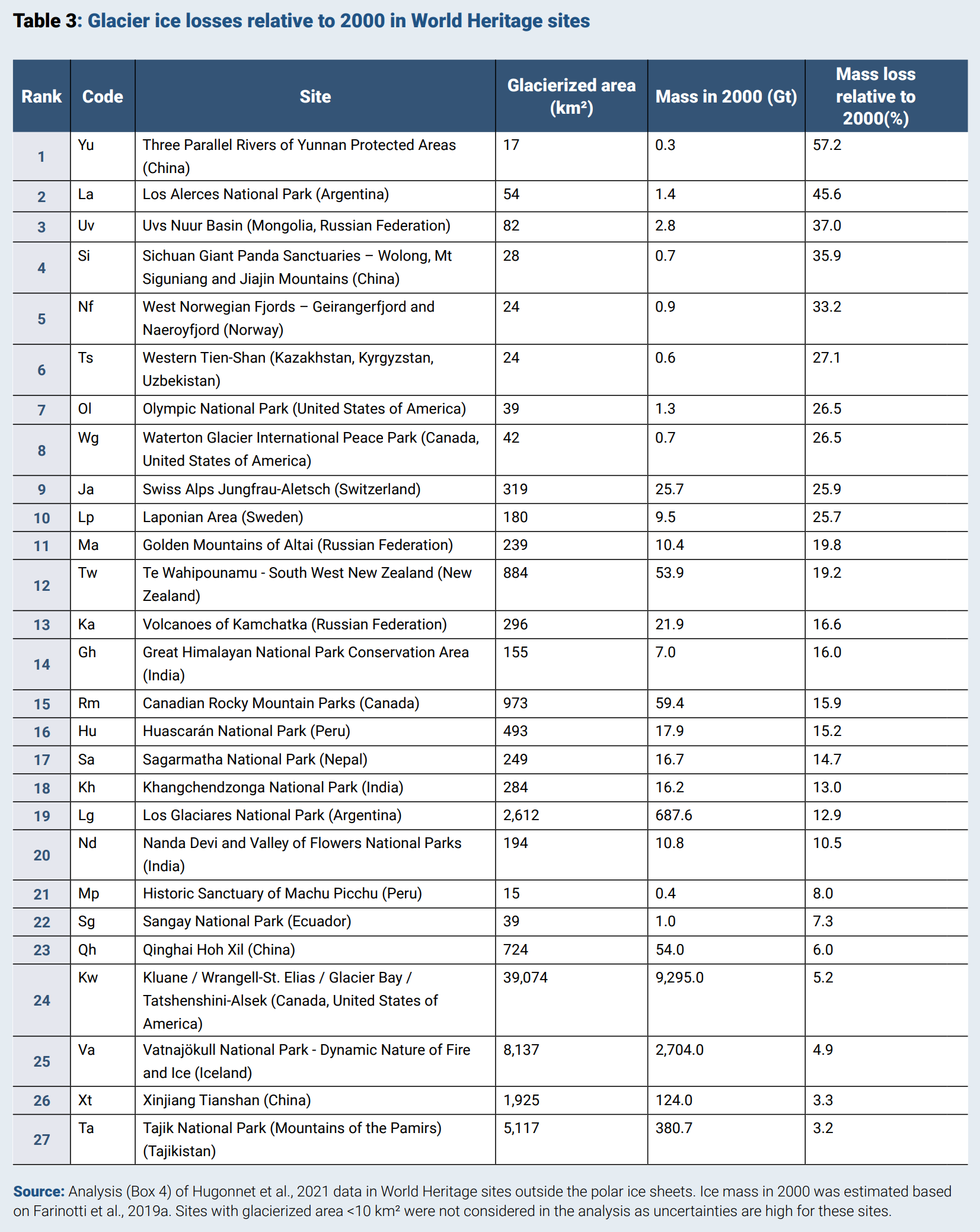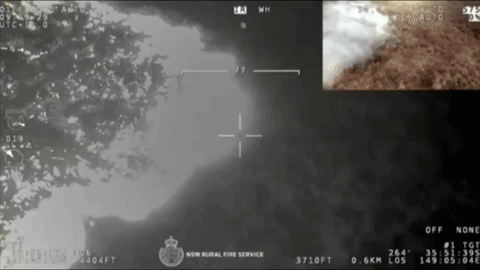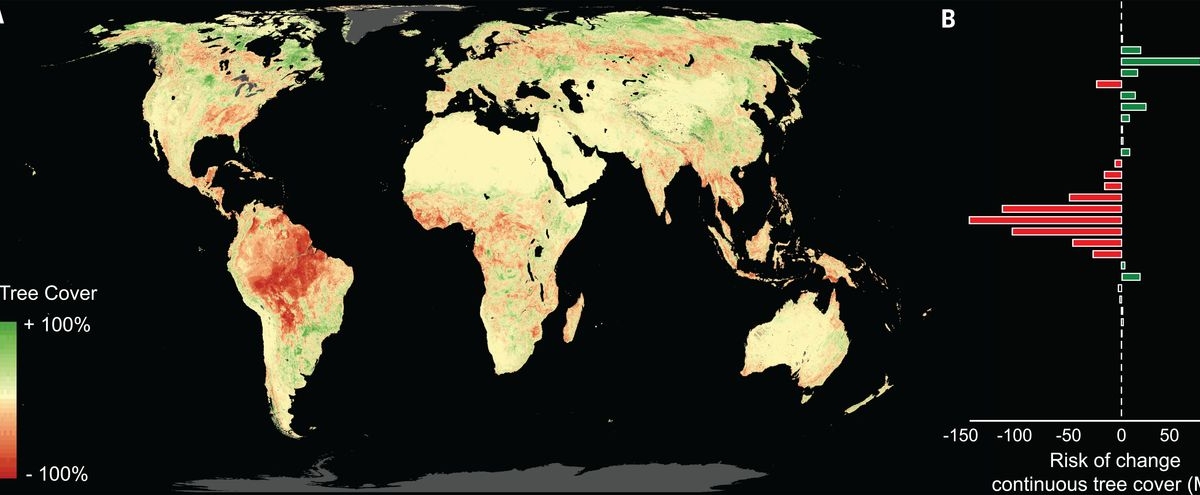Kilimanjaro’s and Africa’s last glaciers to go by 2050, says UN – “What is quite unprecedented in the historical record is how quickly this is happening”
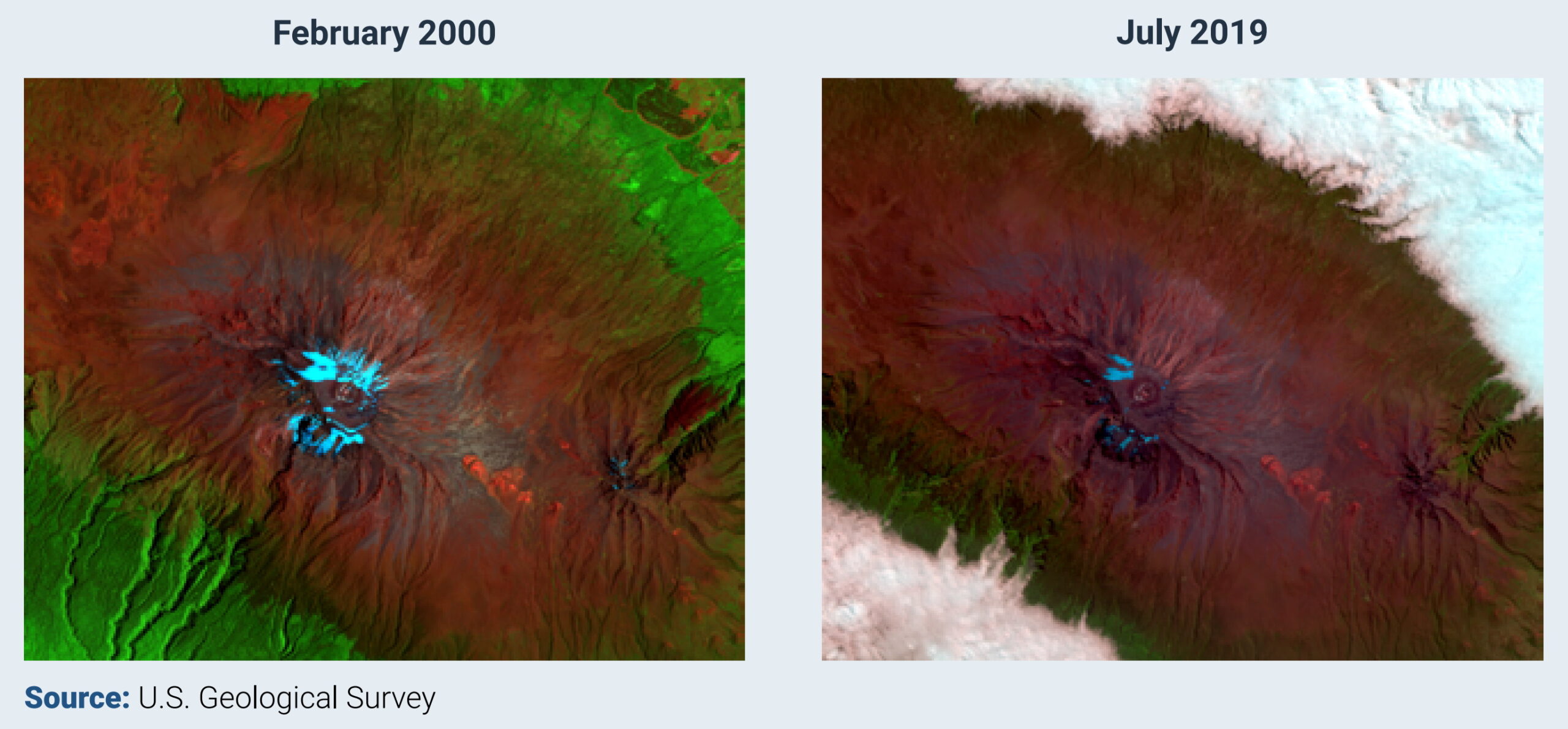
By Patrick Hughes
3 November 2022
(BBC News) – Glaciers across the globe – including the last ones in Africa – will be unavoidably lost by 2050 due to climate change, the UN says in a report [UNESCO finds that some iconic World Heritage glaciers will disappear by 2050 –Des].
Glaciers in a third of UN World Heritage sites will melt within three decades, a UNESCO report found.
Mount Kilimanjaro’s last glaciers will vanish as will glaciers in the Alps and Yosemite National Park in the US.
They will melt regardless of the world’s actions to combat climate change, the authors say.
The report, which makes projections based on satellite data, comes as world leaders prepare to meet in Egypt for next week’s COP27 climate change conference.
About 18,600 glaciers have been identified across 50 UN World Heritage sites. They represent almost 10% of the Earth’s glacierised area and include renowned tourist spots and places sacred to local populations.
The retreat and disappearance of glaciers was “among the most dramatic evidence that Earth’s climate is warming”, the report said.
“We hope we might be wrong, but this is the hard science,” said UNESCO project officer Tales Carvalho Resende, one of the authors. “Glaciers are one of the valuable indicators of climate change, because they’re visible. This is something we can really see happening.”
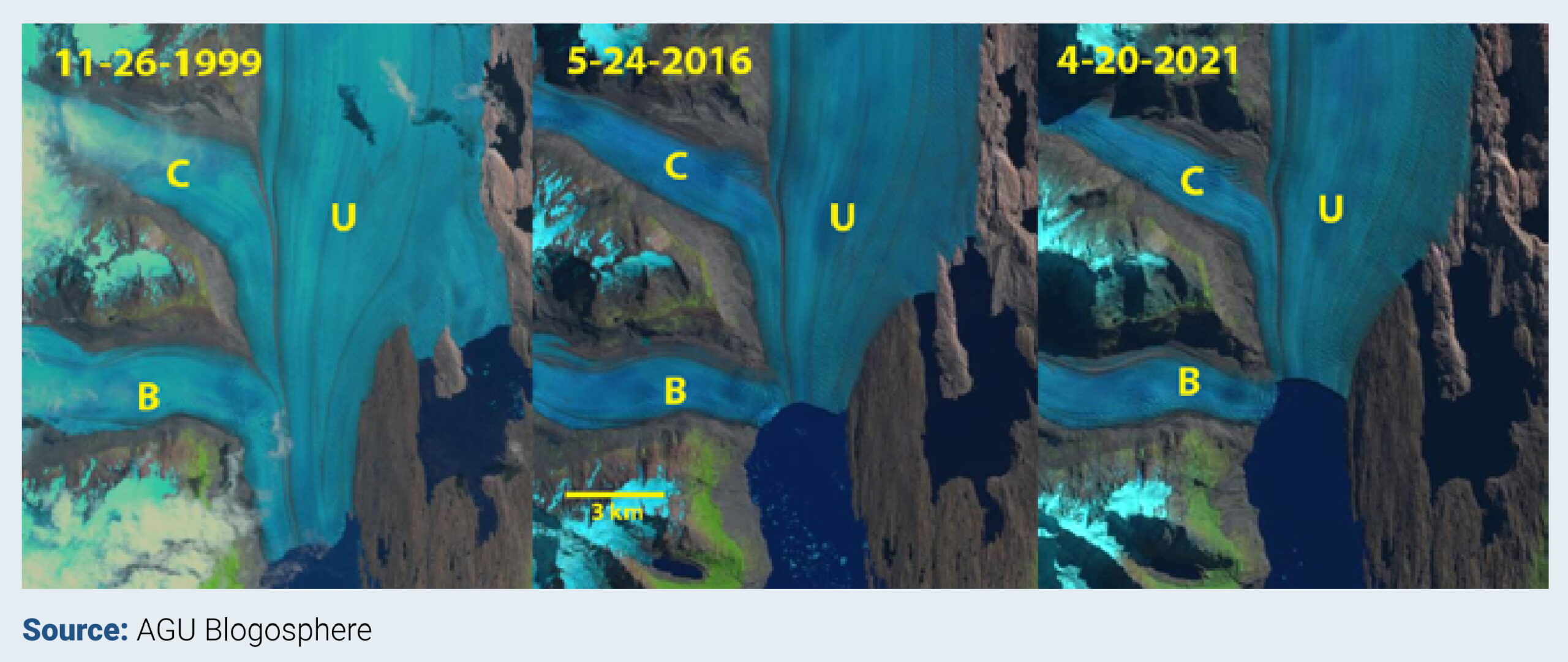
The remaining glaciers in the other two thirds of UN World Heritage sites could be saved, but only if the world limits global warming to 1.5C, the authors say. Another UN report last week found that the world currently had “no credible pathway” to achieve that.
The projections build upon a previous report which used models to compute how World Heritage site glaciers would change over time.
“What is quite unprecedented in the historical record is how quickly this is happening,” said Beata Csatho, a glaciologist from the University of Buffalo, who was not involved in the research.
“In the middle of the 1900s, glaciers were quite stable,” she said. “Then there is this incredibly fast retreat.”
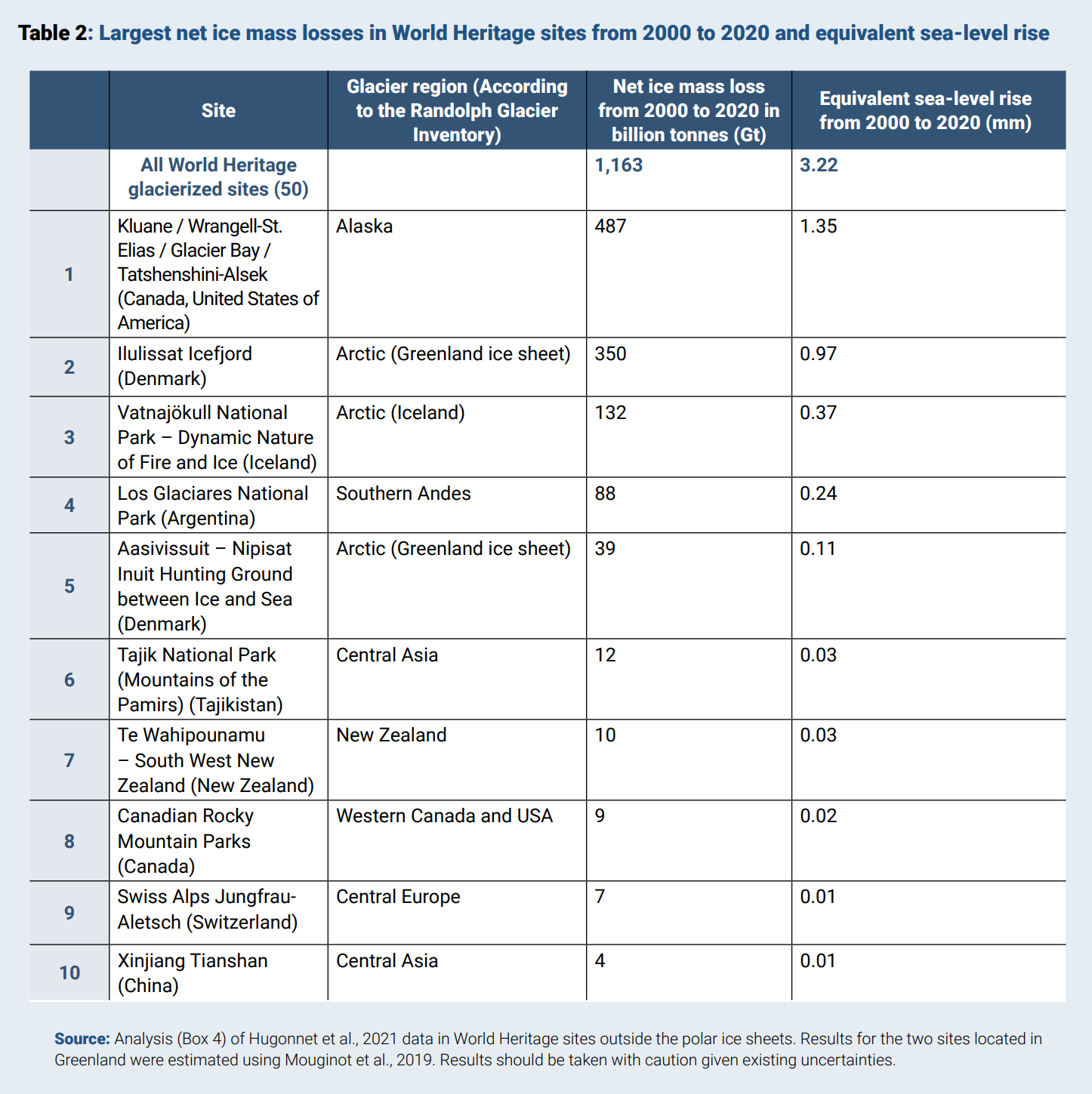
World Heritage sites listed as having glaciers that will disappear by 2050 are:
- Hyrcanian Forests (Iran)
- Durmitor National Park (Montenegro)
- Virunga National Park (Democratic Republic of the Congo)
- Huanlong Scenic and Historic Interest Area (China)
- Yellowstone National Park (United States of America)
- Mount Kenya National Park/Natural Forest (Kenya)
- Pyrenees Mont Perdu (France, Spain)
- Rwenzori Mountains National Park (Uganda)
- Putorana Plateau (Russia)
- Swiss Tectonic Arena Sardona (Switzerland)
- Nahanni National Park (Canada)
- Lorentz National Park (Indonesia)
- Natural System of Wrangel Island Reserve (Russia)
- Kilimanjaro National Park (Tanzania)
- Yosemite National Park (United States of America)
- The Dolomites (Italy)
- Virgin Komi Forests (Russia)
The report said that ice loss in World Heritage sites may have caused up to 4.5% of the observed global sea level rise between 2000 and 2020. These glaciers lose 58 billion tonnes of ice every year – equivalent to the total annual volume of water used in France and Spain put together. [more]
Climate change: Kilimanjaro’s and Africa’s last glaciers to go by 2050, says UN
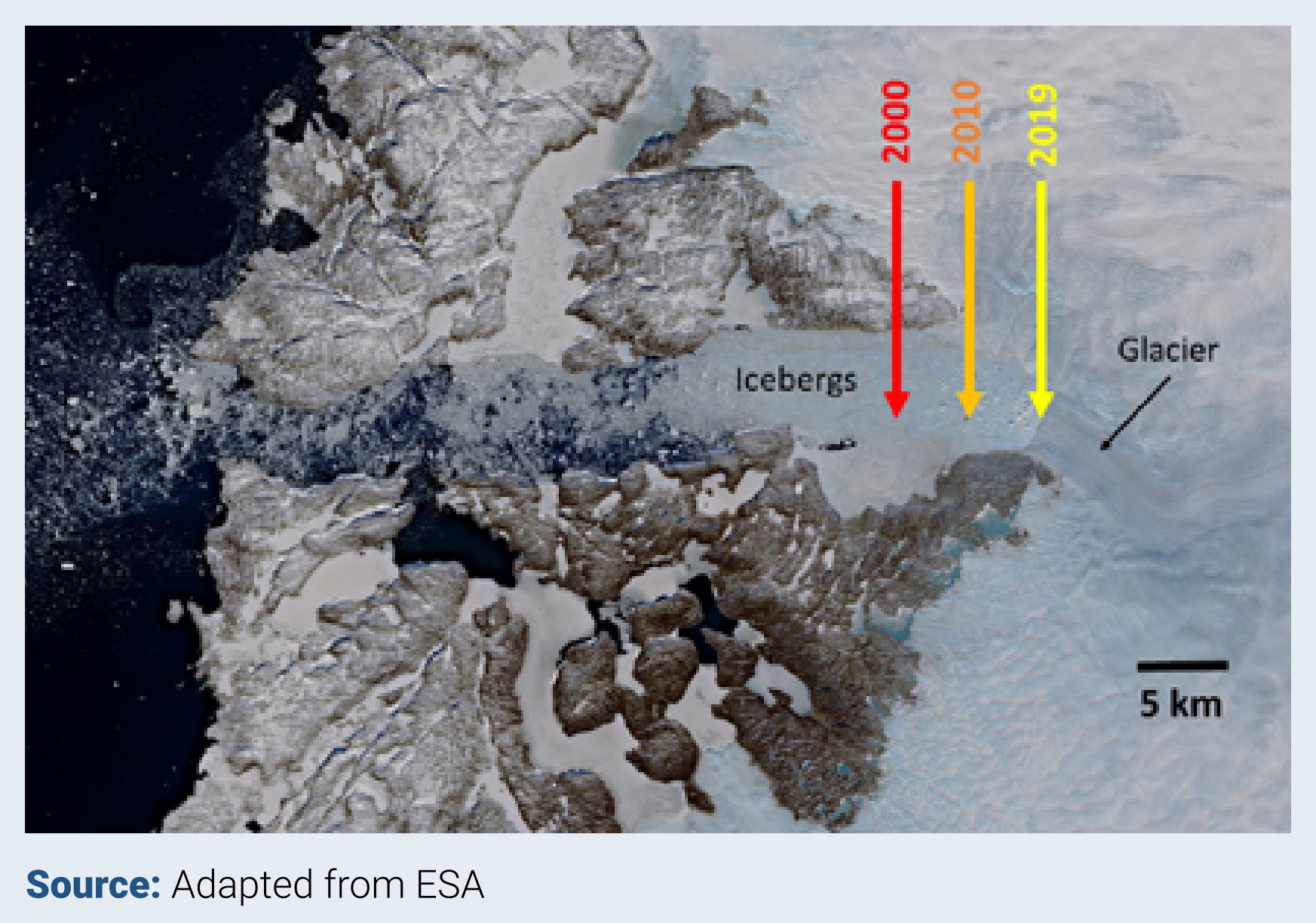
UNESCO finds that some iconic World Heritage glaciers will disappear by 2050
3 November 2022 (UNESCO) – 50 UNESCO World Heritage sites are home to glaciers (A total of 18,600 glaciers have been identified in these 50 sites, covering around 66,000 km2), representing almost 10% of the Earth’s total glacierized area. They include the highest (next to Mt. Everest), the longest (in Alaska), and the last remaining glaciers in Africa, amongst others, giving a representative overview of the general situation of glaciers in the world.
But a new study by UNESCO, in partnership with IUCN, shows these glaciers have been retreating at an accelerated rate since 2000 due to CO2 emissions, which are warming temperatures. They are currently losing 58 billion tons of ice every year – equivalent to the combined annual water use of France and Spain– and are responsible for nearly 5% of observed global sea-level rise.
Only one effective solution: quickly reduce CO2 emissions
The report concludes that glaciers in a third of the 50 World Heritage sites are condemned to disappear by 2050, regardless of efforts to limit temperature increases. But it is still possible to save the glaciers in the remaining two thirds of sites if the rise in temperatures does not exceed 1.5°C compared to the pre-industrial period.
This report is a call to action. Only a rapid reduction in our CO2 emissions levels can save glaciers and the exceptional biodiversity that depends on them. COP27 will have a crucial role to help find solutions to this issue. UNESCO is determined to support states in pursuing this goal.
In addition to drastically reduced carbon emissions, UNESCO is advocating for the creation of an international fund for glacier monitoring and preservation. Such a fund would support comprehensive research, promote exchange networks between all stakeholders and implement early warning and disaster risk reduction measures.
Half of humanity depends directly or indirectly on glaciers as their water source for domestic use, agriculture, and power. Glaciers are also pillars of biodiversity, feeding many ecosystems.
When glaciers melt rapidly, millions of people face water scarcity and the increased risk of natural disasters such as flooding, and millions more may be displaced by the resulting rise in sea levels. This study highlights the urgent need to cut greenhouse gas emissions and invest in Nature-based Solutions, which can help mitigate climate change and allow people to better adapt to its impacts.
Examples of endangered glaciers by region
Africa:
- According to available data, glaciers in all World Heritage sites in Africa will very likely be gone by 2050, incl. Kilimanjaro National Park and Mount Kenya
Asia:
- Glaciers in Three Parallel Rivers of Yunnan Protected Areas (China) – #1 highest mass loss relative to 2000 (57.2%) and also the fastest melting glacier on the List
- Glaciers in Western Tien-Shan (Kazakhstan, Kyrgyzstan, Uzbekistan) have shrunk by 27% since 2000
Europe:
- Glaciers in Pyrenees Mont Perdu (France, Spain) – very likely to disappear by 2050
- Glaciers in The Dolomites (Italy) – very likely to disappear by 2050
Latin America:
- Glaciers in Los Alerces National Park (Argentina) – #2 highest mass loss relative to 2000 (45.6%)
- Glaciers in Huascaran National Park (Peru) have shrunk by 15% since 2000
North America:
- Glacierized patches in Yellowstone National Park (United States of America) – very likely to disappear by 2050
- Glaciers in Yosemite National Park (United States of America) – very likely to disappear by 2050
- Glaciers in Waterton Glacier International Peace Park (Canada, United States of America) have lost 26.5% of their volume in 20 years
Oceania:
- Glaciers in Te Wahipounamu – South West New Zealand (New Zealand) have lost almost 20% of their volume since 2000
UNESCO thanks IUCN, ETH Zurich, the Swiss Federal Institute for Forest, Snow and Landscape Research (WSL), and the Space Geophysics and Oceanography Studies Laboratory (LEGOS) of the French National Center for Scientific Research (CNRS) for their contribution to this study.
Contact
- François Wibaux, f.wibaux@unesco.org, +33767015995
UNESCO finds that some iconic World Heritage glaciers will disappear by 2050
